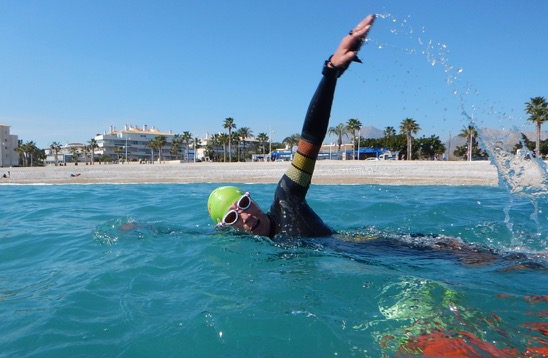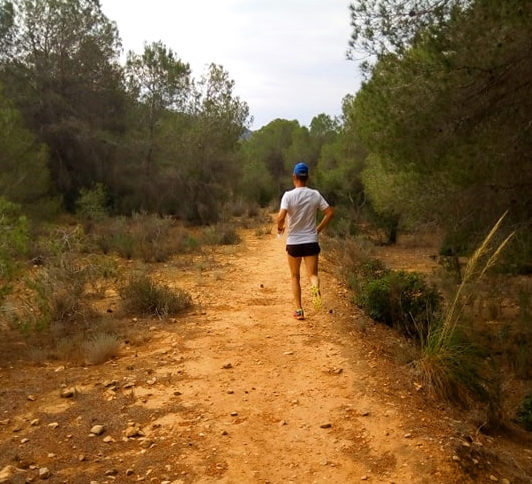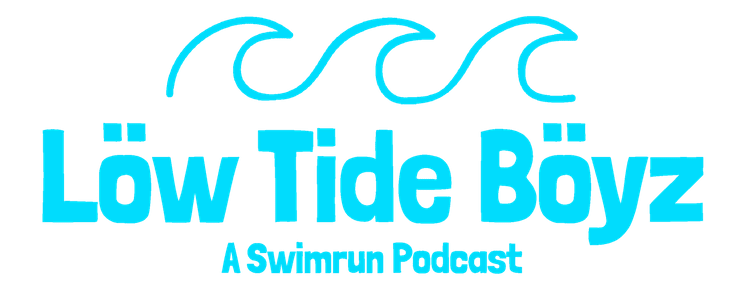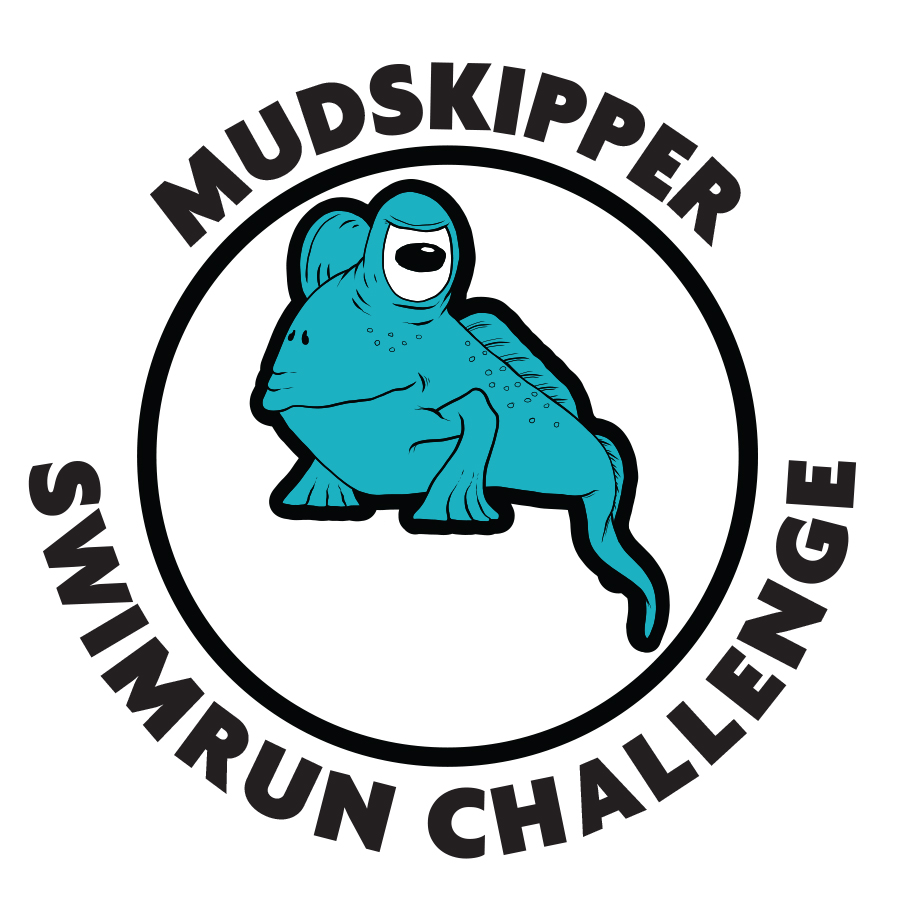Your First
SwimRun Event
By Richard Mitchell and Mogsy Ford
Updated November 2025
Your first Swimrun event may seem a little daunting initially! Which event should you look at? What distance? Do you have all the necessary gear for the race you're thinking of? This team event endurance sport has unique challenges.
Don't worry, we're here to help you reach the finish line in your first swim run race! Here is a guide to your first event. We tell you the things to take into account , and the things that are less important. The most important thing to consider is that you want to have fun and enjoy the experience.
 Enjoy the experience!
Enjoy the experience!(As Amazon associates, we earn a small commission on any sales.)
If you have already picked an event and have done most of the training, you may want to go straight to our guide - Race Day Advice.
Swimrun race rules are fairly basic. Make sure you read the race rules for the particular event you want to enter, but the basics are as follows;
- You must carry all your equipment from the start line to the finish line. ie goggles, swim cap, float (pull buoy) shoes, etc.
- You must remain within 10 metres of your team mate at all times.
- You must NOT throw any trash on the course.
- You must wear your race number (race bib) at ALL times, and your swim cap while swimming.
- Flotation devices are limited in size (check your event rules)
- Swim fins are limited in length to 15cm from your toes. (Check your event rules)
- Cut-off times may be imposed on the course (check your event).
Distance
The first thing to consider when planning your first Swim Run race is the distance and time you estimate it will take you to cover the course.
We STRONGLY recommend that your first ever event distance should be less than 30 km in total, preferably nearer 20 km, as a maximum. Why do we say this?
We found from personal experience that no matter how fit you think you are, the physical challenge of doing a long course event is unique, and easily underestimated. The first time around can be a bit of a shock. So you want to be reasonably sure that you will be able to finish the course before the cut-off time, AND preferably not be last! The short course (sprint distance) events are the ones to go for, at first.
Your First
Swimrun Event
OUR recommendation is that you should look for a race at middle distance (most events have 3 distances) IF you can meet the following conditions;
- You must be able to swim 2000 meters in a POOL in 60 minutes or better.
- You must be able to run on-road at 10 minutes per mile pace for 10 miles.
Those are the minimum requirements for pace and endurance in order to tackle a middle-distance swim run race in a good time. If you can meet those requirements, you have a good chance of finishing the race within the time limits AND enjoying yourself! Also, remember to look at the swim to run ratio of the event.
The next thing to think about is the TIME you will likely be on the course for your first race. Can you last that long? What is the time limit for the event you are considering?
The minimum pace and endurance standard we recommend above is to get an idea of your fitness. Will you be fit enough to take on the challenge of your first Swim Run race?
BUT IN THE actual event, you will run and swim at a different pace to the pool and the road! So you can't rely on those times to predict how long it will take you to cover the course.
ON THE DAY of the race, your open water swims will probably be faster than your pool times, and you will run slower than your road times.
WHY?
Your First
Swimrun Race
BECAUSE
Because you will be swimming in a wetsuit (usually), with swim paddles to help you go a bit faster, and a pull buoy (a float) to help keep your legs high in the water, and frequently you will be swimming in sea water. The combination of swimrun wetsuits, float and salt water makes you float higher, decreasing drag. And the paddles help you go faster!
Of course, the effect will be less if you are taking part in a race in fresh water (a lake or river), and the temperature is warm enough not to need a wet suit. But the paddles and float will still ensure that your race day pace will be better than your pool pace.
On the other hand, your running will probably be slower than your normal road pace. Again, there are several reasons for this;
- You will be running in a wetsuit. This hinders your movements a little.
- The wet suit will have water in it. This adds a few kilos of weight for you to carry.
- You will be running up and down hills, some quite steep.
- Some of the running (or even most of it) will be on rocky or loose trails.
- You will lose time when you enter or exit the water at transition areas, adding time. These are not triathlon transitions. They are rocky, sandy, and sometimes cluttered with seaweed.
All these factors will add up to make your run times slower than you might expect from your pure road running times. This is normal, don't worry. BUT you have to take these factors into account when you work out how long it will take you to cover a race distance.
IMPORTANT
HERE is a basic rule of thumb; if you can meet the pace and endurance standards set out above (2000 meter swim in under 60 minutes, and running 10 miles in 1 hour 40 minutes), then your ACTUAL swimrun pace is likely to be around 13 minutes per mile (or 9 minutes per kilometer) for the run sections (including transitions and water stops), and 2 minutes 30 seconds per 100 meters of swimming.
To get your provisional total time for the course you are considering, get the TOTAL run distance and multiply it by your SWIMRUN running pace, and then do the same for the swim legs; get the total swim distance and multiply it by your likely SWIMRUN swimming pace. (For example, if the total running distance is 20km, and your pace is 9 minutes per km, you multiply 20 by 9 to get a total of 180 minutes.)
NOW you have an idea of how long it is likely to take you to get around the entire course, including the transitions and the water stops.
WE RECOMMEND a total time on-course of under 3 hours for your first event. Unless you are a very good triathlete or trail runner, you will likely find anything longer than 3 hours a bit too much for your first event.
The unique challenges of swimming in cold water in a wet suit with your running shoes on, scrambling in and out of rocky or soft sand transitions, then running on steep trails in a wet suit full of water, and in wet shoes, are energy-sapping. Your run legs turn to jelly.
The gradual increase in fatigue starts to accelerate as the race goes on, more so than running a marathon or doing an Olympic distance triathlon, or a 5 km open water swim race. It is NOT the gradual build of fatigue. It is the ACCELERATION of the fatigue build that surprises you. Swimrun competitions are TOUGH !
 First Swimrun event - training in the Mediterranean
First Swimrun event - training in the MediterraneanTraining
HOW MUCH TIME DO YOU HAVE?
THE NEXT thing to consider is how much time you can devote to training for the event. Obviously, the longer the event, the more time you will need to spend on your training.
AND you need to think about your training facilities. In an ideal world, you will have access to a training pool at least 25 meters (or yards) long, an outdoor body of water such as the sea, a lake or reservoir, or a slow-moving river, and nearby running trails over rough ground that have some steep ascents and descents.
You need a pool for interval training to build speed and endurance; you need an outdoor body of water to practice swimming in your wet suit in cold waters, and you need the trails to get used to trail running.
And you need to do your trail running in a 'wet' wetsuit, ideally. Some road running sessions may be useful, such as a long run (10 miles+) once a week, or interval training on a hill doing repetitions.
But the trail running is really what you need to do - in a water-filled wet suit.
Remember to have a look at our event calendars for USA / World 2026, and events in Europe 2026 for more information on available events. If you find one we haven't listed PLEASE tell us about it! Thank you.
 Some trail running
Some trail runningYour First
Swimrun Event
Your Background
YOUR BACKGROUND
You should think about what background you are coming from. What experience and fitness level are you bringing to SwimRun? We have found that most people fall into 1 of 4 categories, sometimes more than 1;
- A running background - quite common.
- A swimming background - less common on its own.
- A triathlon background - the most common of all.
- "Other" - maybe adventure racing or other endurance events.
We were basically runners before we took up SwimRun, taking part in 10 km races, Half marathons and Full marathons, and we had done some open water swimming races up to 2 km distance in the Mediterranean Sea.
Naturally, we thought that swimming would be our weakest discipline, and running would be our strongest. But the unique and strange sport of SwimRun proved us wrong! We found ourselves being left behind on run sections, and clawing back places hand-over-fist on the swim legs.
If you look at the background you are coming from, and your fitness level, you will have to work on your weakest discipline. For us, it has been hill and trail running. Of course, we need to keep up our swim training too, but it's the hill running that has let us down in previous races.
Transition training
 Transition training
Transition trainingOne big difference between swimrun and triathlon is the transitions.
In swimrun, there are no swim exit mats and no gear or equipment changes. You must carry all your gear on every leg, from start to finish.
At swim exits, you generally have to wade out through mud, up a beach, through seaweed or over rocks. And then, without stopping, you start to run, pulling your goggles up and stowing your swim paddles as you go.
It is very important to practice these transitions, where you are pulling on your swim cap and goggles as you approach the water,and run straight in without stopping. And, after the swim, the opposite.
You can save so much time by simply not stopping to adjust your gear - practice doing it on the run!
SWIMMING.
SO, if you're not a great swimmer, you should consider looking at races that have a low swim to run ratio on the course. In most races, swimming typically accounts for around 15% of the total distance. That's a swim to run ratio of approximately 1:7. Look for a race with a low percentage of swimming.
Also, if you are not used to open water sea swimming, which involves currents, tides, seaweed and possibly jellyfish, look for races where the swimming is in lakes or reservoirs.
RUNNING
You also need to examine your running experience and fitness. You might come from a background of;
- Road running, on predominantly flat roads.
- Road running, in a hilly environment.
- Trail running
- Steep trail running (adventure running).
Be aware that road running, even hilly roads, and even marathon distances, is not the ideal preparation for SwimRun. You really need to practice your trail running!
If you do not have much experience of trails nor hills, look for a race that does not have much vertical gain over the course. Most events will have an elevation profile, to show how much you are climbing and descending. Try to find an event with little vertical!
Cost
FINALLY, you need to consider the cost of taking part in your first SwimRun event. Costs can mount up, but there are ways of keeping things under control.
The main costs involved will be;
- Your Swimrun gear. This includes wetsuit, your shoes, and other equipment.
- Getting to the event.
- Accommodation at the event.
- Cost of living at the event site.
- Possible time off work / loss of income.
The gear pages highlighted give more information about what you may need. Also have a look at Swimrun on a budget for ideas on how to get into Swim Run at low cost.
Getting there includes factors like whether you have to fly to get to an event, or whether you can drive - maybe sharing the gas expense with some other racers!
Accommodation is all about what it will cost to stay at the event venue for at least the night before the race, and maybe the night after the race too! We almost always use AirBnB to find accommodation.
Taking time off work may be necessary if you race on a Sunday and travel back home on the Monday. Will this involve loss of income? Something to consider.
Your first SwimRun event will be exciting and energy-sapping, in equal measure. But if you are well prepared, and have picked an event that suits your experience and level of fitness, you will enjoy a unique race that rewards you for careful planning and sticking to a strategy.
Monitor your activity and performance while you are swimming with the
CLICK HERE for further details and the BEST PRICE at Amazon!
www.swimrun-advice.com works with the following Swimrun companies:















